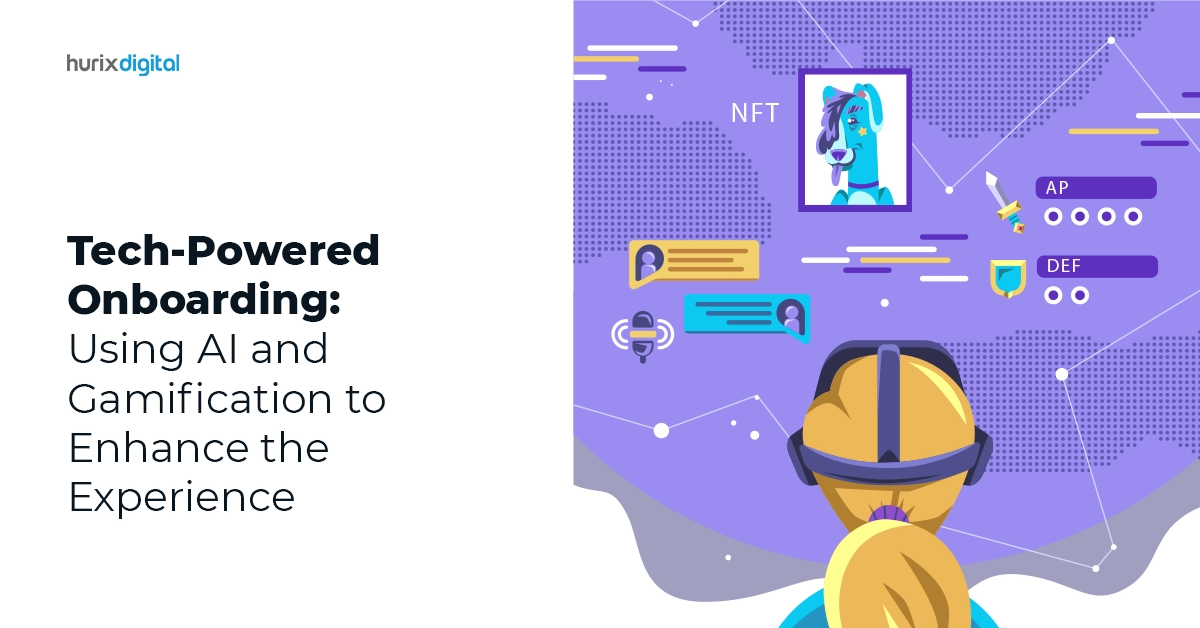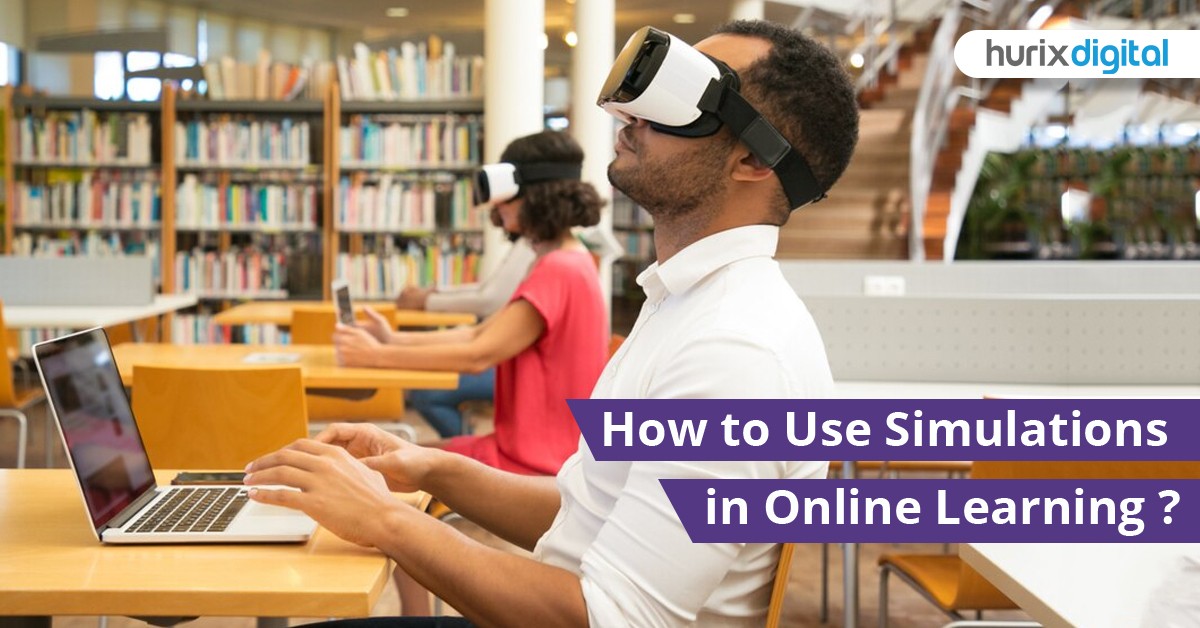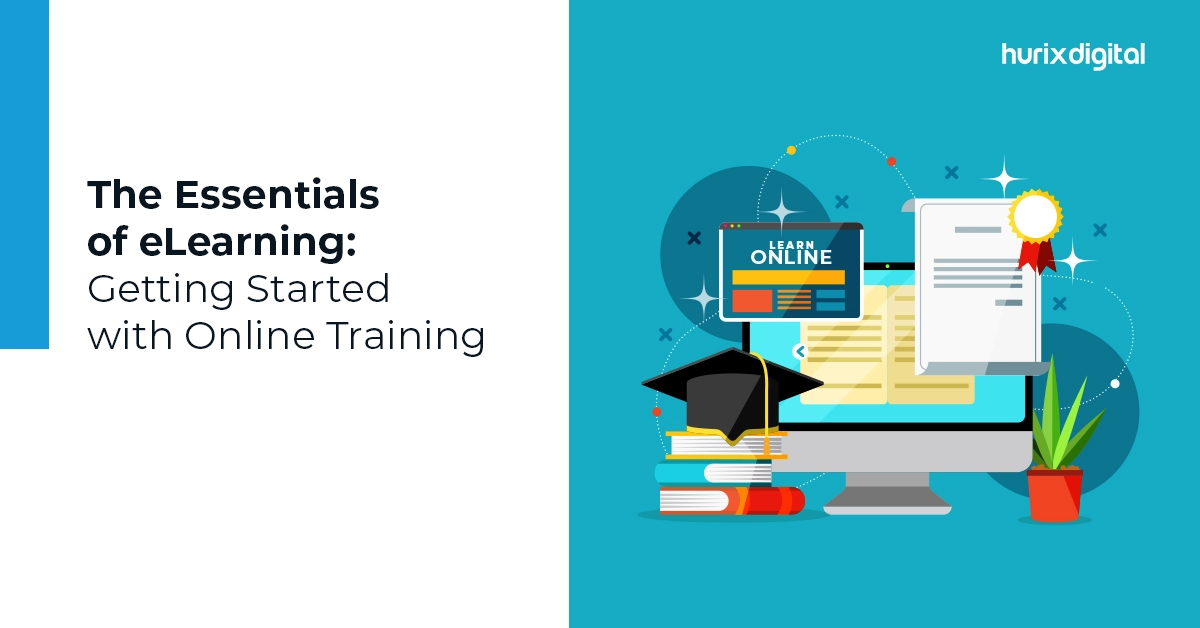
Tech-Powered Onboarding: Using AI and Gamification to Enhance the Experience
Summary
This blog explores the benefits of using AI and gamification to enhance the onboarding process for new hires. It also provides best practices for onboarding software.
Employee onboarding is a critical process that sets the tone for an employee’s entire tenure at a company. It is the first opportunity to showcase the company culture, demonstrate the core values, and build rapport between the new hires and their colleagues.
However, traditional onboarding methods can be tedious, time-consuming, and ineffective, leading to high turnover rates, low productivity, and poor employee satisfaction. That’s where tech-powered onboarding comes in. By leveraging the latest AI-driven tools and gamification techniques, companies can enhance the onboarding experience and make it more engaging, interactive, and personalized.
In this blog, we will explore the details of how AI and gamification can enhance the onboarding process for your employees. Read on!
Table of Contents:
- The Benefits of Tech-Powered Onboarding
- The Role of AI in Onboarding Automation
- The Power of Gamification in Employee Training
- Best Practices for Tech-Powered Onboarding
- Conclusion
The Benefits of Tech-Powered Onboarding
Tech-powered onboarding offers several benefits over traditional onboarding methods. Here are some of the key advantages:
1.Improved Employee Engagement and Retention
Technology can make onboarding more interactive, personalized, and engaging for new hires. For example, onboarding software can provide gamified learning modules, feedback mechanisms, and social networking features that keep new hires motivated and connected.
Technology can also reduce the anxiety of new hires by providing them with clear and consistent information, guidance, and support throughout the onboarding process. According to a recent study, employees who had effective onboarding feel up to 18 times more committed to their workplace.
2. Enhanced Learning and Development
Technology can enable new hires to learn at their own pace, style, and convenience. For example, onboarding software can offer self-paced online courses, video tutorials, and interactive quizzes that cater to different learning preferences and needs.
3. Streamlined Administrative Tasks
Technology can automate and simplify the administrative tasks involved in onboarding, such as collecting documents, verifying credentials, and enrolling in benefits.
For example, onboarding software can integrate with other HR systems, such as payroll, performance management, and learning management, to create a seamless and paperless workflow. Technology can also provide analytics and reports that help HR professionals monitor and evaluate the effectiveness of the onboarding process.
4. Increased Innovation and Adaptability
Technology can help new hires adapt to the changing needs and expectations of the organization and the market. For example, onboarding software can provide continuous learning opportunities, such as micro-learning, webinars, and podcasts, that keep new hires updated on the latest trends and developments.
The Role of AI in Onboarding Automation
AI-driven onboarding tools can help automate many of the administrative tasks associated with onboarding.
Here are some of the key benefits of AI-powered onboarding:
- Personalizing the Onboarding Experience: AI-powered onboarding can help personalize the experience by providing tailored content and support based on the employee’s role, department, and learning style. This can help improve engagement and retention rates.
- Automating Mundane Tasks: AI can also help automate mundane tasks such as data entry, paperwork, and compliance training. This frees up HR staff to focus on more strategic tasks and improves the overall efficiency of the onboarding process.
- Providing Real-Time Support: AI-powered chatbots and virtual assistants can provide real-time support to new hires, answering questions and providing guidance throughout the onboarding process.
- Analyzing Data for Insights: AI employee onboarding solutions can help collect and analyze data from the onboarding process, such as completion rates, satisfaction scores, and performance indicators. This can help identify areas of improvement and optimize the onboarding program for future hires.
- Improving Talent Retention: AI can help reduce employee turnover by ensuring a smooth and positive onboarding experience. It can also help monitor and address any issues or challenges that new hires may face, such as role clarity, expectations, and goals.
Also Read: The Future of Staffing Solutions: AI and Automation
The Power of Gamification in Employee Training
Gamification is the use of game mechanics and design elements in non-game contexts. In the context of employee training, gamification can help improve engagement, motivation, and learning outcomes.
Here are some of the key benefits of gamified training programs:
a) Increasing Engagement and Motivation
Gamification can help increase engagement and motivation by making training more fun and interactive. By incorporating game mechanics such as points, badges, and leaderboards, companies can create a more engaging and competitive learning environment.
b) Encouraging Behavioral Change
Gamification in employee training can also help encourage behavioral change by rewarding positive behaviors and discouraging negative ones. For example, companies can use gamification to encourage employees to complete compliance training or adopt new work habits.
c) Enhancing Learning Outcomes
It can help enhance learning outcomes by improving knowledge retention and skill development. Game mechanics such as repetition, feedback, and rewards help create more effective and engaging training programs.
d) Improving Collaboration and Communication
Gamification can help improve collaboration and communication among employees by fostering a sense of teamwork and social learning. Elements such as challenges, quests, and leaderboards can create a collaborative and supportive learning environment.
e) Increasing Innovation and Creativity
Gamification can also help increase innovation and creativity among employees by stimulating their curiosity and problem-solving skills. By incorporating game elements such as scenarios, simulations, and puzzles, companies can create a challenging and immersive learning environment.
f) Boosting Employee Satisfaction and Loyalty
Lastly, gamification can help boost employee satisfaction and loyalty by creating a positive and rewarding learning experience. Using game features such as rewards, badges, and certificates can help companies can establish a system of acknowledgment and gratitude for their employees.
Best Practices for Tech-Powered Onboarding
Here are some best practices for implementing tech-powered onboarding:
- Choose the Right AI-Driven Onboarding Tools: When choosing AI-driven onboarding tools, it’s important to consider factors such as ease of use, scalability, and integration with existing HR systems.
- Design Effective Gamified Training Programs: To design effective gamified training programs, companies should focus on creating engaging and interactive content that aligns with the company’s culture and values.
- Measure the Success of Onboarding Automation: To measure the success of onboarding automation, companies should track metrics such as time-to-productivity, employee engagement, and retention rates.
Also Read: The Ultimate Guide to Building a High-Performing Team with IT Staffing Solutions
Conclusion
Tech-powered onboarding is the future of employee onboarding. By leveraging AI-driven onboarding tools and gamification techniques, companies can create more engaging, effective, and efficient onboarding experiences that improve employee engagement, retention, and productivity.
Partner with Hurix Digital to explore how our tailored solutions can revolutionize your onboarding process. With our expertise, you can redefine the onboarding journey, seamlessly blending technological innovation with a human touch.
Connect with us for more details!

Performance, Results, Growth, and Life-Long Learning define my professional life. I am passionate about making workplace learning planful, purposeful, and impactful. I take pride in partnering with clients and bringing them the best in learning design and creating solutions that address business challenges.







